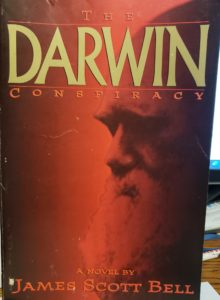
The Pilgrim’s Progress by John Bunyan is a Christian classic novel/allegory that has been around since 1678 in part and 1684 in complete version. For some reason, while I knew about this for years, I never read it.
But a couple of months ago, while browsing my bookshelves for something to read, I found this. I suggested it to Lynda early this month and she agreed we should read this.
Let me tell you, this is a hard read! The subject matter is great; the language is archaic and quite difficult to read, especially aloud. It didn’t help that the book we had was a mass-market paperback from 1968 that fell apart less than halfway through. While we were out and about for a doctor’s appointment, Lynda suggested we buy a new copy rather than power through with the loose pages. So we bought a new one.

The problem was that the book divisions weren’t the same in the 1968 and the newer (2008 or later) book. Bunyan’s book has lots of marginal notes and scripture references. In the 1968 book, the marginal notes are printed as headings between paragraphs. In the new book they are in the margins. Once I was able to orient to the new system, the reading was definitely easier in the new.

For those who don’t know the story, the first part follows a man named Christian, who lives in the City of Destruction. He decides to go on “pilgrimage”—the allegorical word for he became a Christian. He “leaves” his wife and four sons for his journey. Along the way he encounters many problems. He walks with a huge burden on his back. He walks alone, though frequently encounters both those who would deter him from his goal and those who would help him to reach his goal, the Celestial City.
In the second part, Christian’s wife, Christiana, decides she has made a mistake by not going with her husband on pilgrimage. She leaves the City of Destruction with her sons and Mercy, a young woman from the town. Their journey is much different than Christian’s was. They are given a “conductor”—a man named Great-Heart who will help them on their way. Their party of seven (Christiana, Mercy, the four boys, and Great-Heart) heads on the journey. Their guide advises them where to go and protects them from many of the dangers. Their party swell with additional pilgrims.
Eventually they reach the river across-which is the Celestial City. One by one they receive a message via “post”, and are given the time when they must enter the river and cross to meet their king, the allegorical description of death.
As I said, the reading is difficult. Neither of our books had modernized text or punctuation. I did some modernization as I read, but it was difficult.
I’m not going to rate this classic. And, while I suspect I will never read it again, I won’t discard the new book. I’ll find a place for it on the shelf. But the older book is going into the recycling bin.





